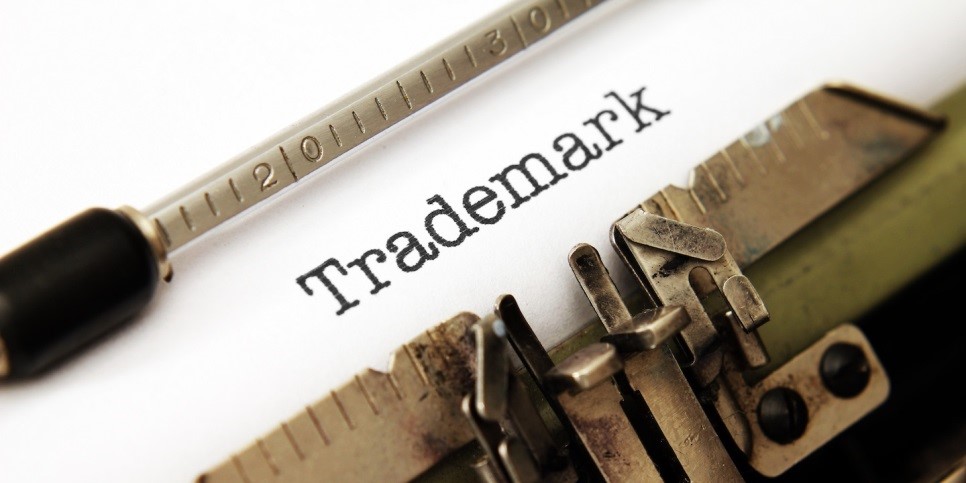To Trademark, or Not To Trademark? That is the Question.

By Mark R. Northrup (IEC Electronics) and Brian B. Shaw (Harter, Secrest & Emery, LLP)
You have now been in Chicago for nine months and have noticed that the alerts from the Chicago Transit Authority only provide estimated train arrival times that are accurate to 3 to 5 minutes. So you develop a new app that draws from additional data sources and improves accuracy to within 45 seconds! You now need a great new name for your great new product. After contemplating for a bit and staring out the window at the elevated trains – you come up with the term APP-L, the most accurate system for tracking trains in Chicago. The APP-L app!

Brian B Shaw
You now do some due diligence and search the USPTO website for applications or registrations of relevant marks and find no exact hits. Excellent, your next step, you get an application on file in the USPTO to be first in the USPTO – and expect your registration will issue in due course. During this time you start marking your products APP-L™ transit tracker. Having done your research and filed the application with the USPTO, you commission new labels and marketing materials for $25,000.
Sounds like a plan. However, the following skeletons are in the closet:
First, about three months later, the examining attorney in the USPTO locates a registration of the mark APPLE for providing geographic and destination information, maps, route planning, traffic, and road condition information, and mass transit directions via computers, telecommunication networks, mobile phones, hand-held devices and wireless navigation devices.
The examining attorney refuses your application as your mark would create a likelihood of confusion with the registered APPLE mark. This refusal from the examining attorney requires a response within 6 months and if a response is not filed, your application will be deemed abandoned. So you now need to worry about not missing the 6 month deadline as well as preparing a response to the USPTO explaining, hopefully with supporting evidence, why there is no likelihood of confusion between APPLE for mass transit directions and your application, so that your application should pass to publication. Even if you convince the examining attorney that your application should continue, Apple will have the opportunity to oppose your application through a contested proceeding in the USPTO. This adds some uncertainty to your plan. But at least you have started using the new labels and marketing material so that the Chicago public is associating APP-L with you.

Mark Northrup
Second, as your mark starts circulating in commerce, not only did the USPTO assert the registration of APPLE against your application, but a small company in Chicago, who never registered their mark APP-L for tracking losses by the Cubs, notices your use. Neither Apple nor the small company is particularly pleased about seeing APP-L in their market place. Both Apple and the small company fire up their counsel and you are now confronted with two cease and desist letters. Both these letters demand that you immediate cease any further use of the mark – thereby potentially resulting in no value of the remaining inventory of your labels and marketing materials. In addition, you may now have the added cost of selecting a new mark and generating new marketing materials. And you will have lost any goodwill that was generated during your earlier distributions of the marketing materials and use of the packaging.
While there are certainly instances where the above searching, filing and use do not result in either:
- refusals from the USPTO,
- or cease and desist letters.
- and wasted inventory,
your chances of such a predicament are greatly increased by this course of action.
So how do you reduce these risks? Since trademark rights generally go to the person to first use the mark, whether they apply for a registration or not, a professional search and analysis prior to investing in a trademark (much less marketing materials and packaging) can be invaluable.
Do the Due Diligence
A professional trademark search and analysis of the results can be conducted to identify prior uses, applications and registrations which may create problems in obtaining a registration or even in the mere use of your mark. The trademark search can be tailored to distinct levels of investigation so that the analysis can be relied upon for informed business decisions – prior to investing in marketing and packaging costs.
Another way to reduce risks includes applying an understanding of trademark rights to the selection of your marks. Many in the marketing field want the trademark to describe the product so that the consumer will learn about the product from the trademark. Unfortunately this strategy is directly contrary to how trademark law treats trademarks.
From the trademark law perspective, the less a trademark has to do with the associated product, the better trademark law likes the mark. Under trademark law, trademarks extend across a spectrum of categories from (i) fanciful or arbitrary, (2) suggestive, (3) descriptive to (4) generic. That is, a trademark that has nothing to do with the associated product (arbitrary) or is a made up term (fanciful) will be afforded easier and broader protection under the trademark law. Conversely, a trademark that is descriptive of the product will be initially refused registration by the USPTO.
Trademark law recognizes that being descriptive is not fatal to obtaining a registration. Specifically, a term which is descriptive may, through usage by one producer with reference to their product, acquire a special significance so that to the consuming public the word has come to mean that the product is produced by that particular manufacturer. This is secondary meaning. Secondary meaning requires that the mark comes to identify not only the goods but the source of those goods. In order to show secondary meaning, it must be shown that the primary significance of the term in the minds of the consuming public is not the product but the producer. In trying to enforce the trademark or obtain a registration, the owner of a descriptive trademark has the burden to establish secondary meaning of the mark.
In providing evidence of secondary meaning to obtain a registration, there are three basic types of evidence:
(1) Prior Registrations: A claim of ownership of one or more active prior registrations on the Principal Register of the same mark for goods or services that are sufficiently similar to those identified in the pending application;
(2) Five Years’ Use: A verified statement that the mark has become distinctive of the applicant’s goods or services by reason of the applicant’s substantially exclusive and continuous use of the mark in commerce for the five years before the date on which the claim of distinctiveness is made; and
(3) Other Evidence: Other appropriate evidence of acquired distinctiveness.
While these bases for establishing secondary meaning allow for the selection and ultimate registration of a descriptive mark, there is uncertainty, added cost and typically delay in obtaining the registration.
Avoid Generic or Descriptive Terms
Though descriptive marks have a chance at becoming registered, generic terms never become trademarks. A generic term is what the relevant purchasing public understands primarily as the common or class name for the goods. Generic terms include BUNDT for a ring cake mix or SCREENWIPE for pre-moistened antistatic cloths for cleaning computer and television screens. These terms are given no trademark protection.
So in selecting a trademark, try to avoid descriptive (and certainly avoid generic terms) and pick a mark that is at least suggestive. Even better pick a mark that is fanciful (a term that has been invented for the sole purpose of functioning as a trademark, such as marks that comprise words that are unknown in the language such as PEPSI, KODAK, and EXXON) or arbitrary (words that are in common linguistic use but, when used to identify particular goods, do not suggest or describe a significant ingredient, quality, or characteristic of the goods or services (such as APPLE for computers, OLD CROW for whiskey, or VEUVE – meaning WIDOW in English – for champagne). These are strong trademarks.
If you are not able to arrive at a fanciful or arbitrary mark, then at least be suggestive. Suggestive marks are those that, when applied to the goods, require imagination, thought, or perception to reach a conclusion as to the nature of those goods. A suggestive term differs from a descriptive term, which immediately tells something about the goods or services.
For example, SPEEDI BAKE for frozen dough is suggestive because it only vaguely suggests a desirable characteristic of frozen dough, namely, that it quickly and easily may be baked into bread. Similarly, NOBURST for liquid antifreeze for hot-water-heating systems is suggestive of a desired result of using the product rather than immediately informing the purchasing public of a characteristic, feature, function, or attribute of the product itself. Incongruity is a strong indication that a mark is suggestive rather than merely descriptive. Even FRANKWURST has been held not merely descriptive for wieners, as that although “frank” may be synonymous with “wiener,” and “wurst” is synonymous with “sausage,” the combination of the terms is incongruous and results in a mark that is no more than suggestive of the nature of the goods.
Suggestive marks, like fanciful and arbitrary marks, can be registered on the Principal Register without proof of secondary meaning. This saves cost and avoids the uncertainty of showing secondary meaning and expediting the timeline to obtaining a registration.
Taking the time upfront and investing in an appropriate selection and investigation of a proposed mark can significantly reduce unpleasant surprises and costs in the future.
So we ask you the reader now should you, “Trademark or not”?











